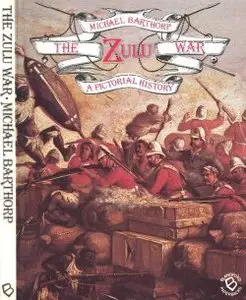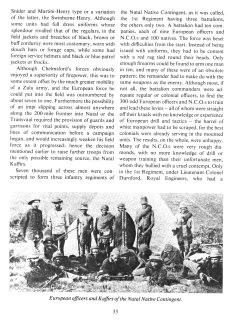Michael Barthorp "The Zulu War. A Pictorial History"
Blandford Press | 1980 | ISBN 071731469 | 180 pages | PDF | 199MB
During the 1830s, the Boers made the "Great Trek" from the Cape Colony across the Vaal River to escape British colonial rule. They were generally at peace with British Cape Colony and Natal, but there were running conflicts with the native states, especially that of the Zulus. The Zulu Nation, founded by Shaka kaSenzangakhona, was the most powerful and stretched from the Pongola River in the north to the Transkei border in the south. Sir Henry Bartle Frere was appointed High Commissioner for South Africa in 1877 with the express mission of forming a confederation among British Cape Colony and Natal and Boer Transvaal and the Orange Free State. In absorbing the Transvaal, he inherited the long-simmering border dispute between the Zulus and the Boers. Frere came to the conclusion that the Zulu Nation stood in his way of successful confederation and further expansion and, without the consent of the British government, embarked on a series of programs aimed at bringing about its downfall.
Cetshwayo kaMapande held the Zulu throne and had traded freely with the Europeans in the Natal Colony. He was puzzled by Frere's hostility to the Zulus and, before he was able to respond, events came to a head On 11 January 1879, the invasion of Zululand began.
Lt. General Frederic Augustus Thesiger, 2d Baron Chelmsford, was in overall command of the invading force during the Zulu War. In addition to British regulars, Chelmsford had Natal auxiliaries, volunteers, and irregulars under his command, a total force of 17,922 officers and men opposed by approximately 40,000 warriors available to Cetshwayo. His plan to invade Zululand consisted of a three-pronged attack with the goal to capture Cetshwayo. The right hand column, comprised of 4,750 men, was to cross theTulega River at Lower Drift and head for Eshowe. The center column, containing 4,709 men, was to cross at Rorke's Drift and make straight for Cetshwayo's Royal Kraal at Ulundi. The left hand column, with 2,278 men, crossed the Blood River at a point further north and was to head for Ulundi also. Two columns were held in reserve. Chelmsford considered the center column to be the main thrust and located his headquarters there. Based upon his experience during the defeat of the Xhosa in the Eastern Cape, Chelmsford had little regard for the fighting qualities of the indigenous peoples. Everything was in place for his first encounter with the main Zulu impi at Isandlwana on 22 January 1879
RapidShare





